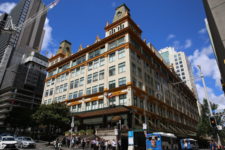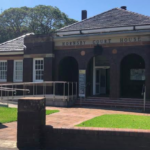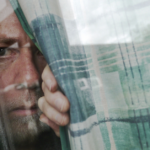The Lack of Ethnic Diversity in the NSW Magistracy

NSW attorney general Mark Speakman last week announced the appointment of eight new magistrates to the bench of the NSW Local Court. And with six of the new appointees being women, this has now boosted the number of female magistrates in this state to 65.
“While the upper echelons of the justice system have traditionally been male dominated,” Mr Speakman said in a media release, “it is pleasing to see the gender gap closing in the Local Court with females to make up 46 percent of magistrates.”
The rising representation of women in the magistracy reflects a general trend within the NSW judiciary as a whole.
As the Judicial Council of NSW Annual Report 2017-18 notes in 1987, only 5 percent of NSW judicial officers were women. In 1998, it had risen to 15 percent, while last year, women accounted for 34 percent of all judicial officers in this state.
However, looking at the last names of the eight new magistrates appointed by the state’s top lawmaker last week – Kemp, Hawkins, McLaughlin, Hockey, Viney, Kiely, Lacy and Love – it’s fairly safe to assume all of them are of Anglo Australian stock.
And, while we congratulate the new magistrates on their appointment, and commend the rising gender equity within the magistracy, we also believe it’s high time the appointment of magistrates begins to reflect the multicultural nature of our community, and of those who practise and come before the courts. Indeed, a significant proportion of defendants as well as experienced and highly capable criminal law practitioners in our state come from non-Anglo backgrounds; but this is far from reflected in the composition of the magistracy.
The ethnic makeup
Several months ago, we sent an email to the NSW Chief Magistrate’s office inquiring about the religious distribution within the magistracy for a prospective article on ethnic diversity. The office initially questioned why we would want that information, before sending a further reply that they don’t have it.
This response wasn’t completely unexpected, as in September 2016, we contacted the Judicial Commission of NSW, as well as the three tiers of the NSW Court system – Local, District and Supreme – regarding the same matter, only to be informed none of them record such information.
So, we’ve done it the hard way. We took a look at the family names of the magistrates listed on the NSW Local Court website to get an idea of the cultural backgrounds represented on the bench. And while this is not an exact science, it does provide a rough idea.
Of the 139 magistrates listed on the site, the family names of 114 seem to suggest a person of an Anglo background: in this instance, meaning a name derived from the United Kingdom. And these names account for 82 percent of the magistrates in our state.
The next biggest cohort is made up of magistrates with names that suggest a northern European origin, with 15 magistrates possessing such names. And then there are eight names that suggest magistrates of an eastern European background: firstly, Greek and then Italian.
There’s one magistrate with an East Asian background, Magistrate Derek Lee. Magistrate Imad Abdul-Karim is a Lebanese man, who accounts for the only Middle Eastern person on the list. There are no South Asian magistrates. Nor are there any First Nations magistrates at present.
Selecting the bench
While it seems that the days of condemning the magistracy for its overrepresentation of white men are fast coming to a close, it will still be open for criticism regarding it being a domain overwhelming reserved for white people. And this seems to have everything to do with the selection process.
As outlined on the NSW Department of Justice website, magistrate positions are advertised, and expressions of interests are received, mainly from lawyers. A selection panel interviews the candidates and provides a report to the NSW attorney general who makes the final decision.
The panel at present is made up of Chief Magistrate Judge Graeme Henson – a white male – the secretary of the Department of Justice Michael Coutts-Trotter – another white man – along with a member of the legal profession and a prominent member of the community.
A diverse bunch of lawyers
In 2017, 26 percent of the Australian populace were born overseas, 49 percent were either born abroad or had a parent born overseas and 2.8 percent were First Nations peoples. And those working as lawyers provide a more accurate representation of the cultural makeup of the public.
Of the 28,935 solicitors holding a NSW practising certificate in 2015, 1.6 percent were First Nations people, while 27 percent were born overseas. And it’s this diverse range of people working as lawyers, who make up the majority of those applying for positions in the magistracy.
A 2017 Law Society of NSW report titled Diversity and Inclusion in the Legal Profession recommends that law firms employ a diverse range of people as a way of improving performance. It explains that having a range of cultural backgrounds in the workplace broadens the skills and awareness of all.
However, this message is certainly not getting through to those who are choosing which lawyers are selected to join the magistracy. And with such a broad base of cultural backgrounds represented in the legal profession, it’s obvious there’s a racial bias involved in appointing magistrates.
White bread politics
And just as a diverse range of cultural backgrounds can promote greater awareness in a law firm, so too does this apply to the NSW magistracy. Diversity can lead to greater understanding of people from different cultures and this in turn can dissolve hidden prejudices.
Equality before the law relies on an understanding of a wide range of values and lifestyles, while a culturally homogenous magistracy can breed ignorance. And as magistrates work alone – making decisions in different courtrooms – it’s hard to gauge the effect of any broadly shared biases.
Although another domain known for its lack of adequately representing the ethnically diverse population, is Australian parliament. It’s still, overwhelmingly, the realm of the white man, and it’s much easier to see how prejudice manifests in the chamber.
An example of how an Anglo weighted parliament can lead to prejudicial outcomes occurred last year, when all Coalition senators voted in favour of a Pauline Hanson motion asserting “it’s OK to be white”, which is a slogan associated with white supremacist groups globally.
Although, Hanson’s motion was voted down, it was almost successful with 28 for and 31 against. And it’s hard to see that if parliament was more ethnically diverse, how such a motion could have come so close to being passed.
Indeed, it’s these sorts of biases that could be shaping the various rulings being made by the predominantly white NSW magistracy, however there’s no adequate way of gauging if this is taking place.








